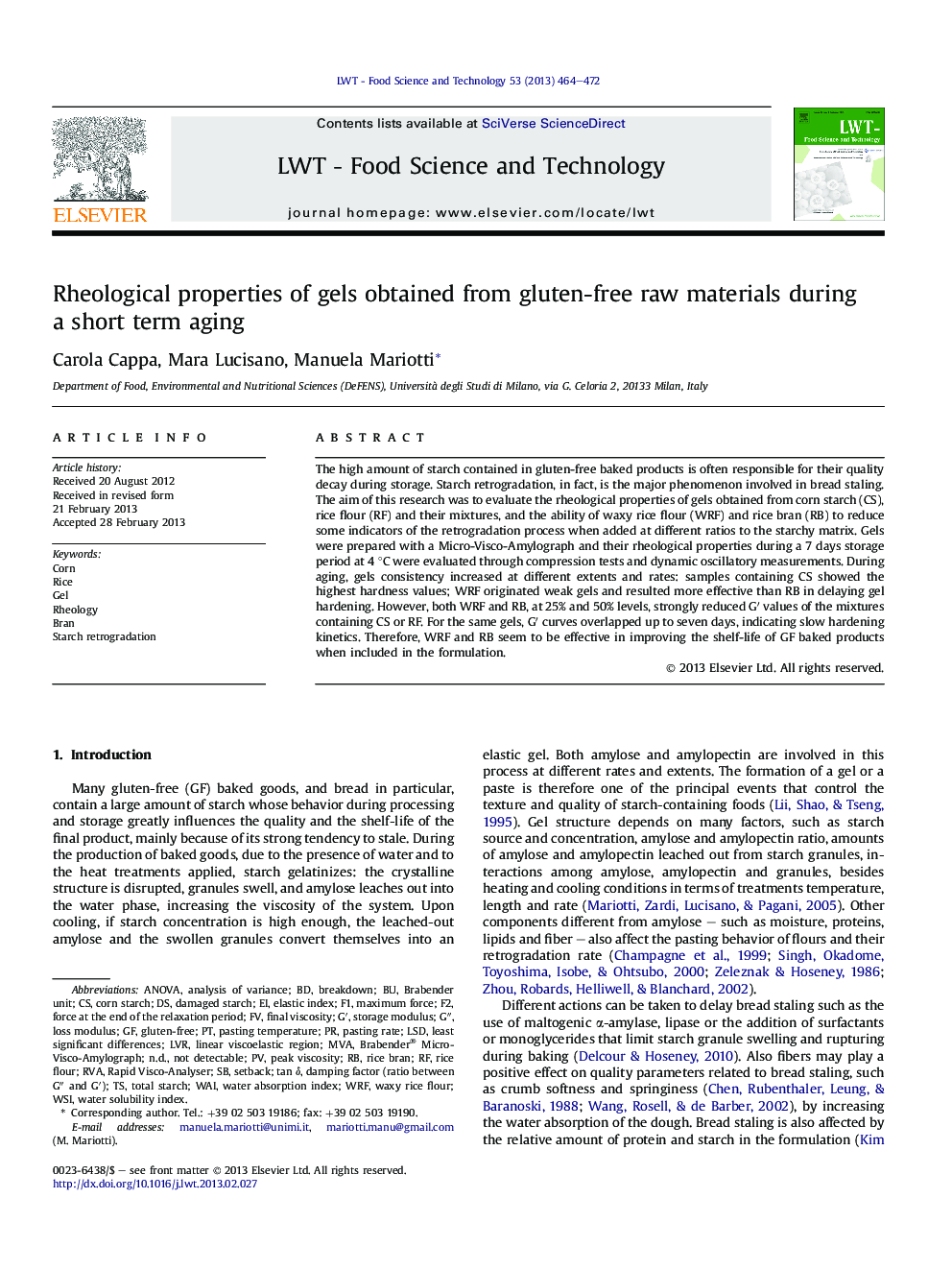| Article ID | Journal | Published Year | Pages | File Type |
|---|---|---|---|---|
| 6404433 | LWT - Food Science and Technology | 2013 | 9 Pages |
Abstract
The high amount of starch contained in gluten-free baked products is often responsible for their quality decay during storage. Starch retrogradation, in fact, is the major phenomenon involved in bread staling. The aim of this research was to evaluate the rheological properties of gels obtained from corn starch (CS), rice flour (RF) and their mixtures, and the ability of waxy rice flour (WRF) and rice bran (RB) to reduce some indicators of the retrogradation process when added at different ratios to the starchy matrix. Gels were prepared with a Micro-Visco-Amylograph and their rheological properties during a 7 days storage period at 4 °C were evaluated through compression tests and dynamic oscillatory measurements. During aging, gels consistency increased at different extents and rates: samples containing CS showed the highest hardness values; WRF originated weak gels and resulted more effective than RB in delaying gel hardening. However, both WRF and RB, at 25% and 50% levels, strongly reduced GⲠvalues of the mixtures containing CS or RF. For the same gels, GⲠcurves overlapped up to seven days, indicating slow hardening kinetics. Therefore, WRF and RB seem to be effective in improving the shelf-life of GF baked products when included in the formulation.
Keywords
RVAwaxy rice flourRapid Visco-Analysern.d.LVRWSIWAIBrabender UnitWRFLSDG″G′Rice flourLeast significant differencesGluten-freeRiceanalysis of varianceANOVAmaximum forceBreakdownCornRheologyStarch retrogradationBranRice branwater absorption indexwater solubility indexSetbacknot detectableMVAloss modulus Storage modulusLinear viscoelastic regionDamaged starchCorn starchTotal starchpeak viscosityfinal viscositypasting temperatureGel
Related Topics
Life Sciences
Agricultural and Biological Sciences
Food Science
Authors
Carola Cappa, Mara Lucisano, Manuela Mariotti,
